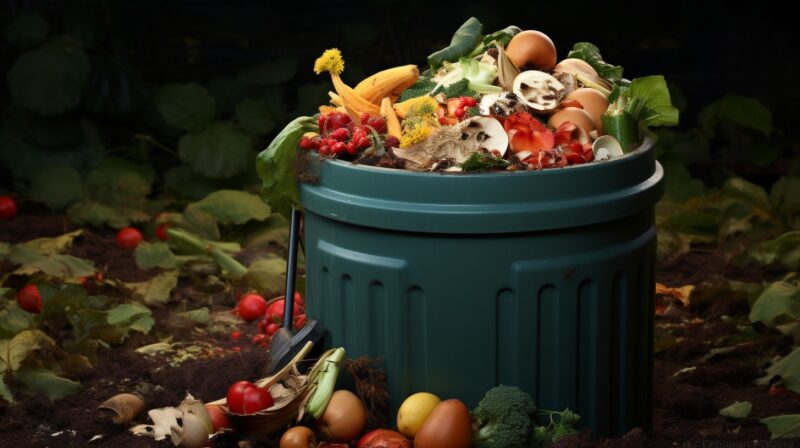I’ve always considered composting to be one of the best ways to recycle organic materials and give back to the environment. Layering a compost bin plays a crucial role in creating a healthy, nutrient-rich pile that can be used to fertilize gardens and plants.
It’s essential to have a balanced mix of green materials, which provide nitrogen, and brown materials, which supply carbon.
Here, I’ll share with you my knowledge and experience on how to layer a bin effectively. Setting up a compost bin involves placing organic materials in strategic layers to promote the decomposition process.
Today, I want to talk about compost bins in greater detail.
Layering the Materials
When layering the compost bin, it’s essential to strike the right balance between green materials and brown materials. Green materials, such as vegetable scraps, fruit peelings, and grass clippings, provide nitrogen for the compost.
On the other hand, brown materials like leaves, wood chips, and cardboard add carbon to the mix. They certainly make a great heap. A well-balanced pile should have an optimal carbon-to-nitrogen ratio of around 25:1 to 30:1. I suggest adding the materials in alternating layers to ensure a good mix of both greens and browns:
| Layer Number | Description |
|---|---|
| Layer 1 | Twigs and coarse materials for drainage and aeration |
| Layer 2 | Green materials |
| Layer 3 | Brown materials |
| Repeat steps 2 and 3 as needed. | |
Optimizing Moisture and Oxygen Levels
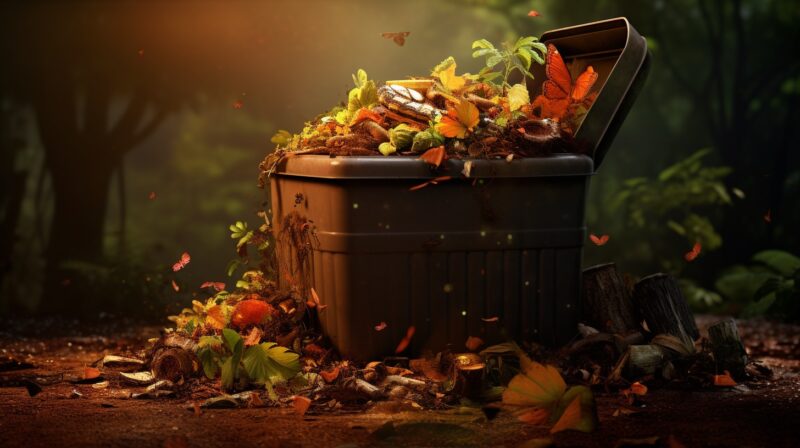
Proper moisture and oxygen levels are crucial for efficient decomposition in your bin. To achieve this, I recommend turning and mixing the compost regularly to promote airflow. This will ensure the aerobic bacteria responsible for decomposition have sufficient oxygen.
It’s equally essential to maintain the right moisture levels in your compost. To prevent your compost from becoming too dry or too wet, follow these guidelines:
- If it feels dry, add water or more green materials
- If it is too wet, add brown materials to absorb excess moisture
Determining Your Compost’s Volume and Ratio
When starting a compost bin, size is an important factor. The volume of your bin or a tumbler determines the amount of material you’ll need and the proportions of greens to browns.
Ideally, you should aim for a bin with a minimum size of 3 feet by 3 feet to generate enough heat for efficient decomposition. As for the materials, follow these approximate proportions:
| Type of Material | Proportion |
|---|---|
| Green Materials | 1 part |
| Brown Materials | 2-3 parts |
By combining the ideal layering, moisture, and oxygen management, along with a balanced carbon-to-nitrogen ratio, you will create a healthy environment in your bin or a tumbler for efficient decomposition and nutrient-rich compost.
Building Your Own Bin
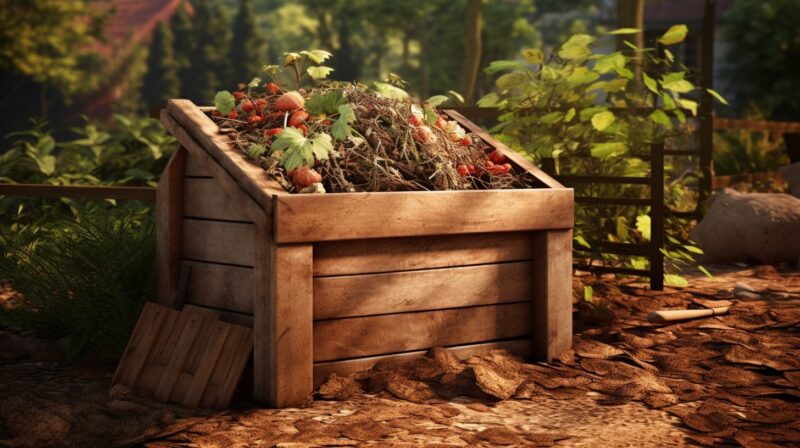
Now let me provide you with several tips on how to build your compost bin.
Choosing the Right Container
When setting up a compost bin, it’s essential to select the right container. A compost bin can be made from various materials, such as plastic, wood, or metal. The size of the container should be based on the amount of waste you generate and the space you have available.
For most households, a compost bin with a capacity of 60 to 80 gallons should suffice.
Creating the Base Layer
Begin by creating a base layer using coarse materials, such as twigs or small branches. This layer should be about 4-6 inches thick and will help with airflow and drainage within the bin.
On top of the base layer, add a mixture of brown and green materials in equal proportions. It’s important to shred or tear the brown materials into smaller pieces to improve decomposition. The approach should be somewhat similar in the case of composting toilets.
Here’s an example of a simple layering process:
| Layer | Material Type | Thickness | Examples |
|---|---|---|---|
| 1st Layer | Coarse Materials | 4-6 inches | Twigs, Branches |
| 2nd Layer | Brown Materials | 3-4 inches | Dry Leaves, Wood Chips |
| 3rd Layer | Green Materials | 3-4 inches | Vegetable Scraps, Grass Clippings |
| Repeat the process until the bin is full. | |||
Ensuring Proper Aeration and Drainage
Oxygen is essential for the decomposition process, and proper aeration promotes the growth of beneficial microbes. Here are a few tips for ensuring adequate aeration and drainage in your compost bin:
- Turn it regularly once in four days to introduce fresh air into the pile.
- Prevent compaction by avoiding over-watering and using the correct balance of materials. If the pile is too wet, add more brown materials to balance the moisture level.
- Maintain a balance of green and brown materials in the bin to avoid creating anaerobic conditions.
Maintaining Your Compost Pile
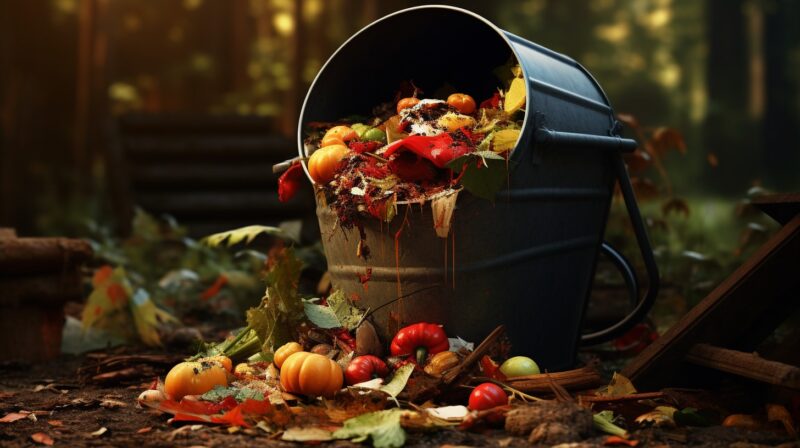
One essential aspect of maintaining a heap is turning and mixing the contents regularly. By doing so, you ensure the even decomposition of organic matter. Turning pile also helps to distribute air throughout, which is crucial for maintaining aerobic conditions that support the growth of beneficial microbes.
I suggest turning your compost pile every two weeks or so to improve aeration and maintain that proper balance. Use a pitchfork or a aerator to mix materials effectively, making sure to bring materials from the center out and from the outside in.
Remember, consistency is key, and turning your pile regularly can speed up the composting process.
Monitoring Moisture and Temperature
Keeping the pile at the appropriate moisture level is equally crucial for successful composting. Ideally, it should have the moisture of a wrung-out sponge. Too much moisture can lead to anaerobic conditions, creating undesirable odors, whereas too little moisture can slow down the decomposition process.
To maintain the correct moisture level, you can:
- Add water: If your compost pile seems too dry, sparingly sprinkle water throughout the layers and mix it in. Be cautious not to overwater the pile.
- Add dry material: If your pile is too moist, mix in more dry materials such as brown leaves, hay, or shredded paper to absorb excess moisture.
Monitoring temperature is another vital aspect of pile maintenance. A well-maintained pile should heat up to temperatures between 130°F and 160°F (55°C to 70°C), which is such an optimal range for the decomposition process. You can measure pile’s temperature with a thermometer, inserting it at various points in the pile.
If your compost pile is not reaching these temperatures, try turning and mixing it more often or adjust the balance of green and brown materials to achieve optimal heat levels.
By turning and mixing your compost pile regularly and attending to the moisture level and temperature, you’ll be well on your way to creating nutrient-rich compost for your garden.
Using Finished Compost
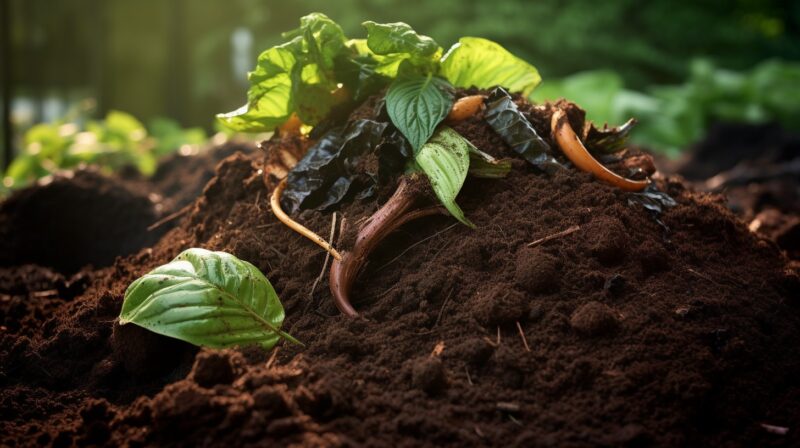
When my compost has transformed into a dark, crumbly substance with an earthy smell, it means it’s finished and ready for use. The process usually takes several months, but the end result is a nutrient-rich soil amendment, perfect for nourishing gardens.
It is essential to ensure that worms, fungi, and other decomposers have completed their work, as indicated by the absence of any recognizable ingredients, such as vegetable peels or leaves. How soon you have it on your disposal depends on what device you’re using.
We are talking about compost toilets, tumblers, and bins. Each one of these comes with objective factors you should take into consideration before you decide on one.
Applying It in Your Garden
My approach to using finished pile depends on the specific needs of my garden. Here are some ways I apply compost, which can help improve garden health and plant growth:
- Soil amendment: By mixing finished pile with garden soil, I create a more fertile and better-aerated environment for plants. This can be done during planting, or when preparing a new bed. Depending on the plant’s nutrient requirements, I mix in 2-4 inches of compost into the top 6-8 inches of soil.
- Top dressing: For established plants and lawns, I regularly apply a thin layer of finished compost at the base of plants or over the grass. This acts as a slow-release, natural garden fertilizer, and over time, the nutrients seep into the soil, encouraging healthier root growth.
- Mulching: Using it as a mulch around plants helps retain moisture, suppress weeds, and maintain even soil temperatures. I spread a 1-3 inch layer around vegetables, flowers, and trees, taking care not to cover their stems to avoid rotting.
- Compost tea: To create a liquid fertilizer, I soak a few handfuls of finished compost in a bucket of water for 24-48 hours. Once strained, tea can be sprayed on plants or watered into soil, providing a gentle nutrient boost.
FAQs
What is the easiest compost setup?
In my experience, the easiest compost setup is a simple pile or a compost bin. Start with a layer of coarse materials like sticks or wood chips at the bottom for aeration. Then, alternate between layers of green materials, such as kitchen scraps, and brown materials like leaves or straw.
How long does compost take to break down?
The time it takes for compost to break down depends on factors like the size of the pile, oxygen and moisture levels, and the balance of green and brown materials. In general, most compost piles take between three months to a year to decompose fully.
How often do you have to turn compost?
While opinions on turning frequency may vary, I recommend turning your compost pile every two to three weeks to maintain proper aeration and facilitate decomposition. Adequate oxygen is crucial for the microorganisms, which play a significant role in breaking down the organic materials.
Should a compost pile have a lid?
A lid for your compost pile can be beneficial, as it helps regulate moisture and provides some protection from heavy rains or animals. However, you should be careful not to cover the pile too tightly, as this could restrict airflow and hinder decomposition.
Can you put old soil in compost bin?
Yes, you can add old soil to your compost bin. Doing so can introduce beneficial microorganisms, which aid in the decomposition process. However, be cautious not to add too much, as excessive amounts can lead to the pile becoming too compact and dense, resulting in decreased aeration.
In Conclusion
Properly layering a compost bin is crucial for efficient decomposition and nutrient-rich compost.
By following these steps, I am confident that you’ll create a thriving pile.
With a bit of patience and upkeep, your bin will yield rich, nutrient-dense compost that can significantly improve the health of your garden.
Related Posts:
- Compost Tumbler vs. Bin – Which Composter Is Best For You?
- How to Make a Compost Heap: 10 Top Tips - Waste Not,…
- How Good Is a Black Bear’s Sense of Smell? Into the…
- What Biome Do Grizzly Bears Live In? Into the Great…
- What Do Black Bears Eat? Insights into Their Diet
- Why Do Meerkats Stand Up? - Insights into Their…


